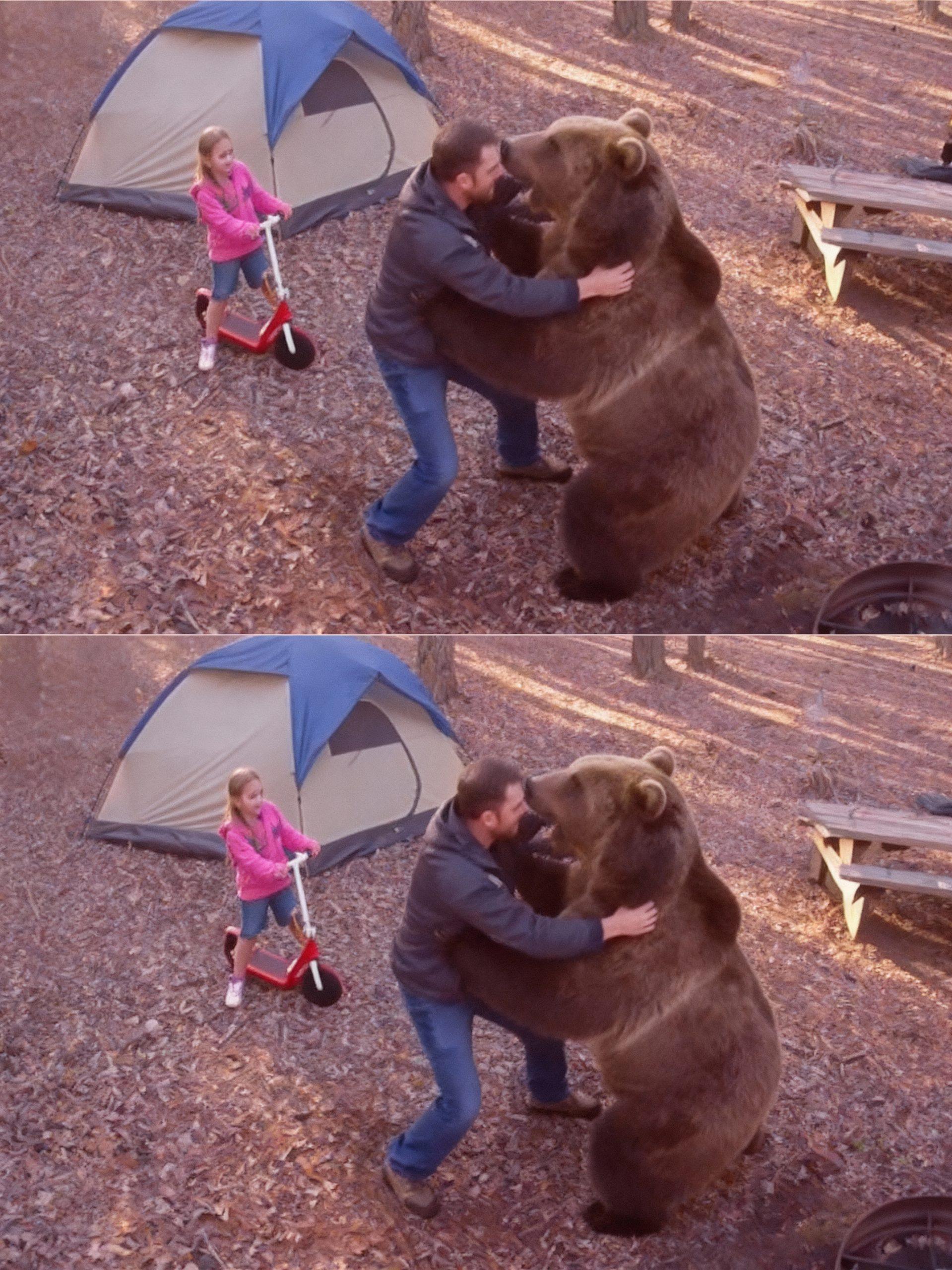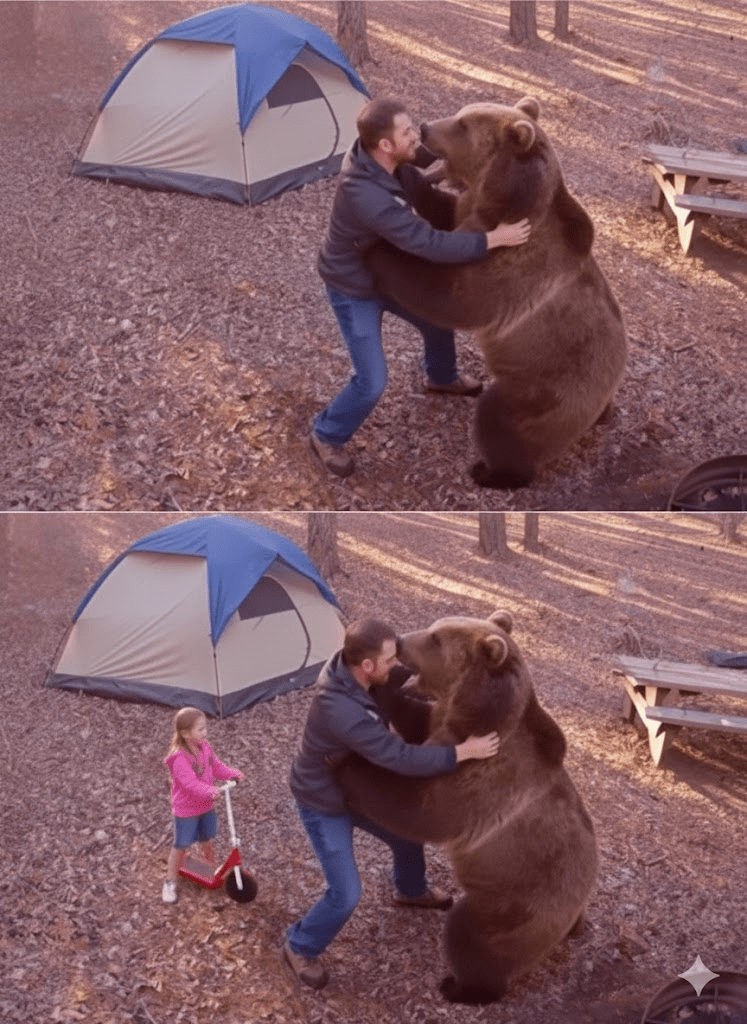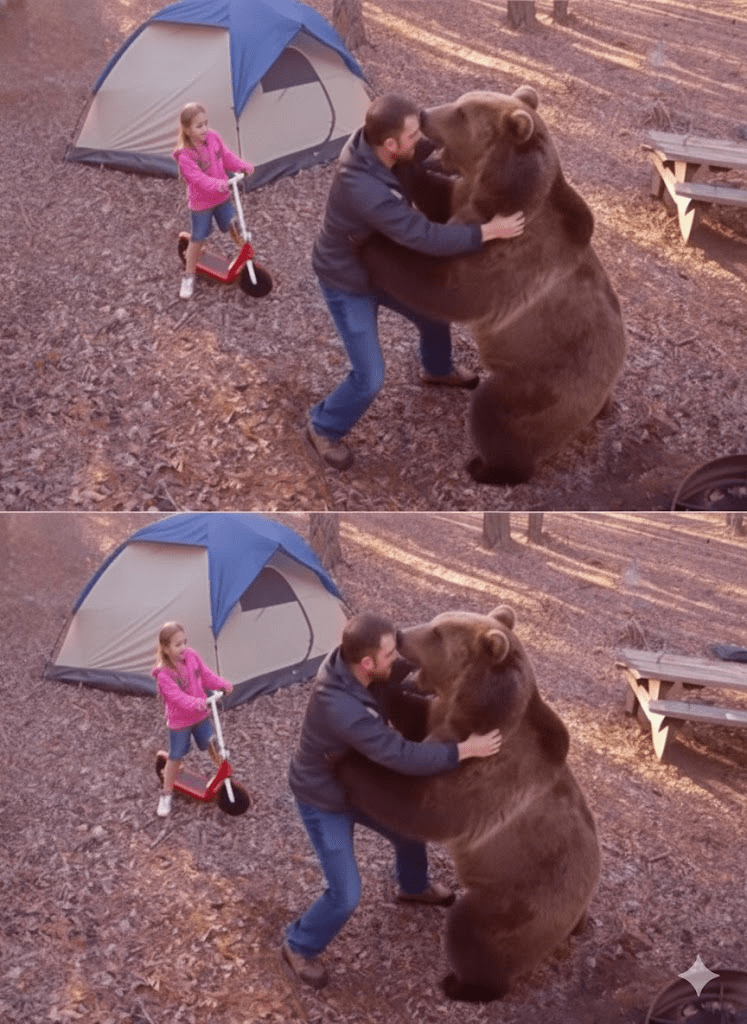In a world increasingly shaped by human development, the boundaries between our lives and the wild continue to blur. While often portrayed as a source of conflict or danger, the potential for profound and even heartwarming interactions between humans and wild animals remains a captivating subject. The image before us, depicting a man embracing a bear with a young girl on a scooter observing nearby, challenges conventional narratives and invites us to ponder the deeper implications of such an encounter. It speaks to a rare moment of apparent harmony, prompting us to consider not just the immediate circumstances of this particular scene, but the broader spectrum of human-wildlife coexistence, the ethics of interspecies relationships, and the inherent draw we feel towards the natural world. This scene, both unusual and compelling, serves as a powerful metaphor for the delicate balance we strive to maintain with nature and raises questions about trust, respect, and the unexpected connections that can form when we step beyond our preconceived notions of the wild.

Beyond the sensationalism of a man embracing a bear, this image offers a glimpse into the complex spectrum of human-wildlife relationships. It deviates sharply from the typical narrative of fear and avoidance that often characterizes our interactions with large predators. Instead, it suggests a level of familiarity, perhaps even affection, that challenges our understanding of wild animal behavior and human boundaries. This particular scene, likely staged or involving an habituated animal under controlled conditions, serves as a powerful visual anomaly, forcing us to consider the various ways humans and animals can coexist, from strict separation to highly integrated environments. The casual presence of the child on the scooter further amplifies this departure from the norm, highlighting the seemingly relaxed atmosphere around what would ordinarily be considered a dangerous situation.

The context surrounding such an interaction is crucial for a nuanced understanding. While the image itself is compelling, it is important to recognize that direct physical contact with large wild animals like bears carries inherent risks. Most experts advocate for maintaining a respectful distance from wildlife to ensure the safety of both humans and animals. However, this image compels us to delve into situations where such boundaries are intentionally blurred, perhaps in the context of wildlife rehabilitation, educational programs, or even through unique circumstances of animal habituation in specific locations. The presence of the camping tent suggests a natural, outdoor setting, yet the interaction itself appears anything but wild, pointing towards a managed scenario rather than a spontaneous encounter in the true wilderness.

Ethical considerations are paramount when discussing such images. The concept of “wild” is often romanticized, but it also carries responsibilities. If this bear is accustomed to human contact, questions arise about its welfare, its ability to survive independently in the wild, and the potential impact on its natural behaviors. Is this an ambassador animal, raised with specific purposes, or an individual whose life has been irrevocably intertwined with human intervention? The photograph prompts a discussion about responsible wildlife management and the fine line between human-animal connection and the potential for exploitation or harm. It challenges viewers to move beyond a simple emotional response and engage with the deeper ethical dimensions of anthropomorphism and intervention in the lives of wild species.

In summary, while the image of a man embracing a bear is undeniably captivating and elicits a sense of wonder, it also serves as a potent catalyst for deeper discussions. It challenges our preconceived notions about human-wildlife interactions, prompts ethical considerations regarding animal welfare and responsible management, and ultimately highlights the complex, often contradictory, relationship we share with the natural world. This photograph is not just a snapshot of an unusual moment; it is a mirror reflecting our own curiosity, our desire for connection, and the ongoing quest to understand our place within the intricate tapestry of life on Earth.






